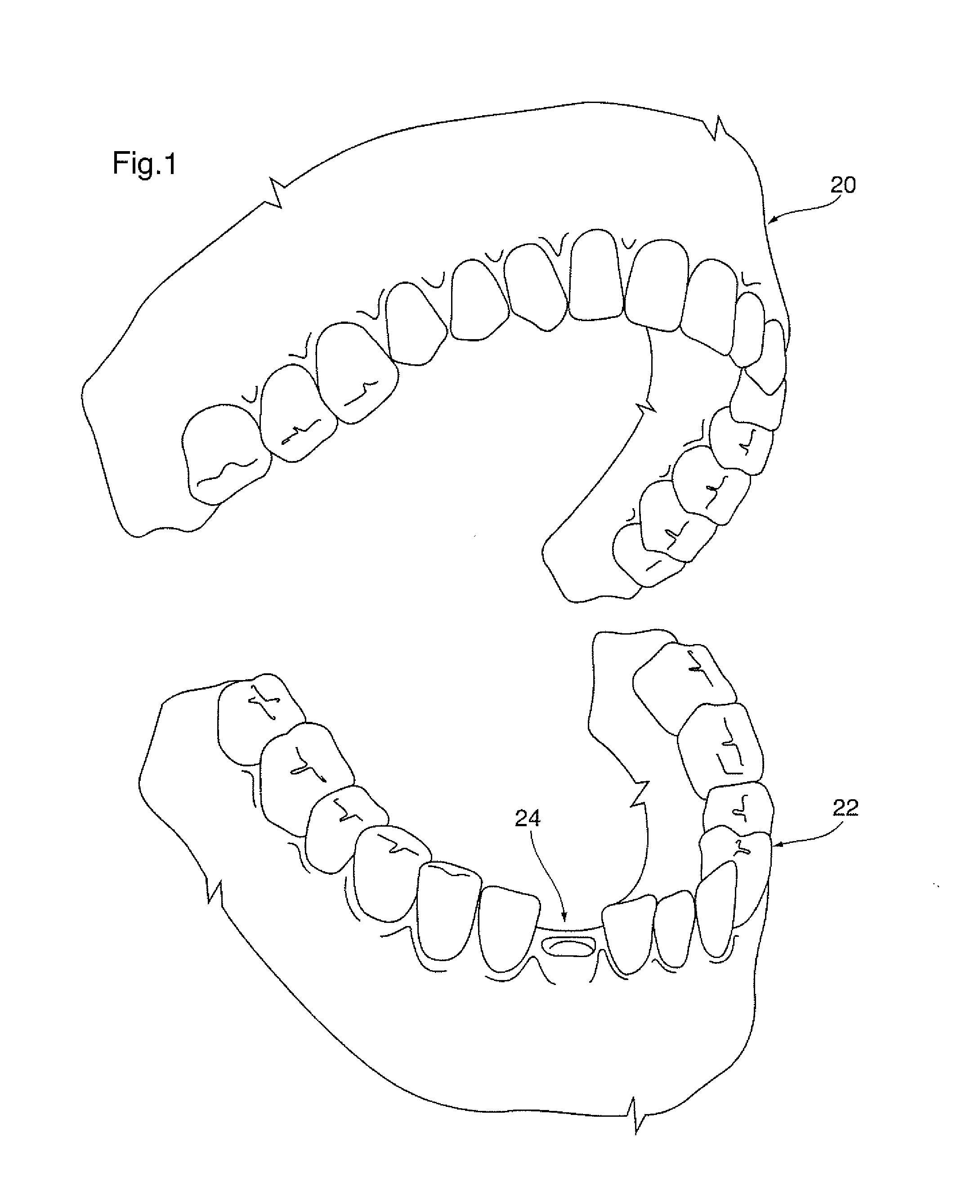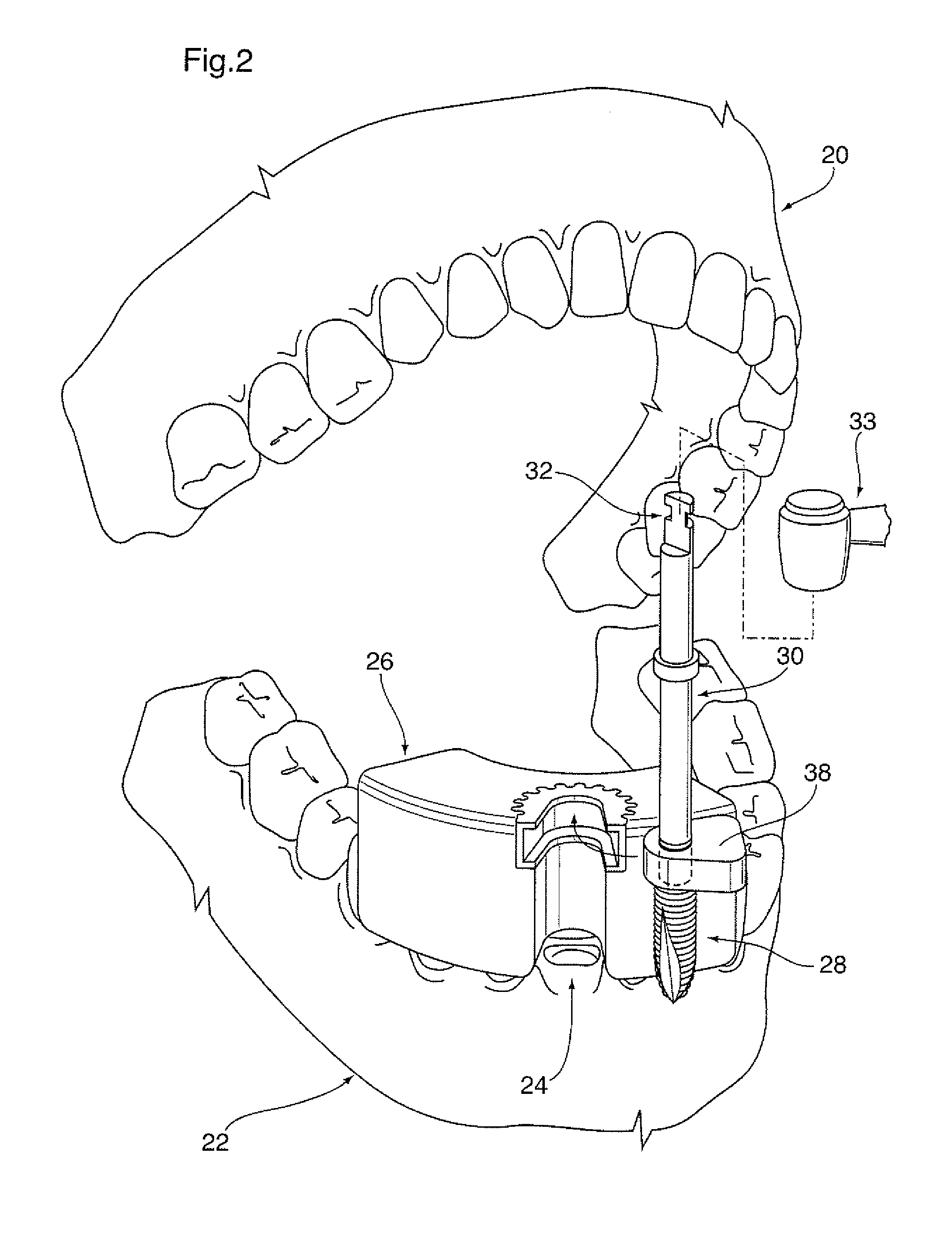Dental implant positioning system
a positioning system and dental implant technology, applied in dentistry, boring tools, medical science, etc., can solve the problems of reducing precision, affecting the accuracy of dental implants, and reducing the accuracy of surgical procedures, so as to prevent binding and stripping of threads
- Summary
- Abstract
- Description
- Claims
- Application Information
AI Technical Summary
Benefits of technology
Problems solved by technology
Method used
Image
Examples
Embodiment Construction
[0033]Referring first to FIG. 1, upper and lower jaws 20 and 22 respectively of a patient are shown in an open condition as for installation of a dental implant. The intended location of the implant is indicated at 24.
[0034]FIG. 2 shows components of the system of the invention in place on the lower jaw 22.
[0035]A surgical template is illustrated diagrammatically at 26. The template will be made by technicians in a dental laboratory prior to commencement of the implant installation procedure. The template will have been molded closely to a cast of the patient's jaw at the location at which the implant is to be installed.
[0036]The implant itself is shown at 28 and is a self-drilling, self-tapping dental implant, for example of the type shown in U.S. Pat. No. 7,008,227 supra. The implant is threaded onto the leading lower end of a drive shaft 30. Alternative connection means such as a Torx drive socket may be used to attach the implant to the drive shaft. Drive shaft 30 extends about ...
PUM
 Login to View More
Login to View More Abstract
Description
Claims
Application Information
 Login to View More
Login to View More - R&D
- Intellectual Property
- Life Sciences
- Materials
- Tech Scout
- Unparalleled Data Quality
- Higher Quality Content
- 60% Fewer Hallucinations
Browse by: Latest US Patents, China's latest patents, Technical Efficacy Thesaurus, Application Domain, Technology Topic, Popular Technical Reports.
© 2025 PatSnap. All rights reserved.Legal|Privacy policy|Modern Slavery Act Transparency Statement|Sitemap|About US| Contact US: help@patsnap.com



